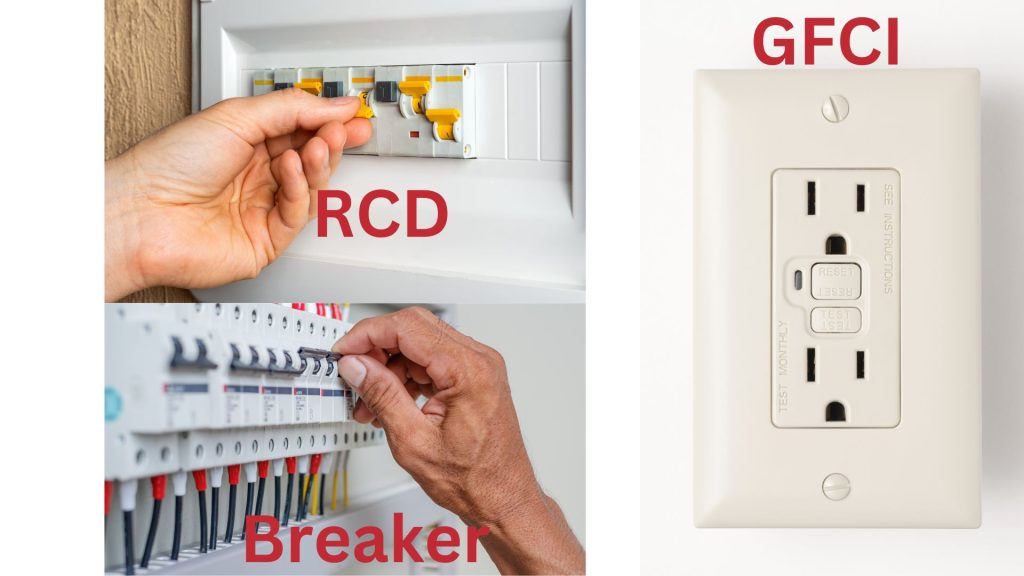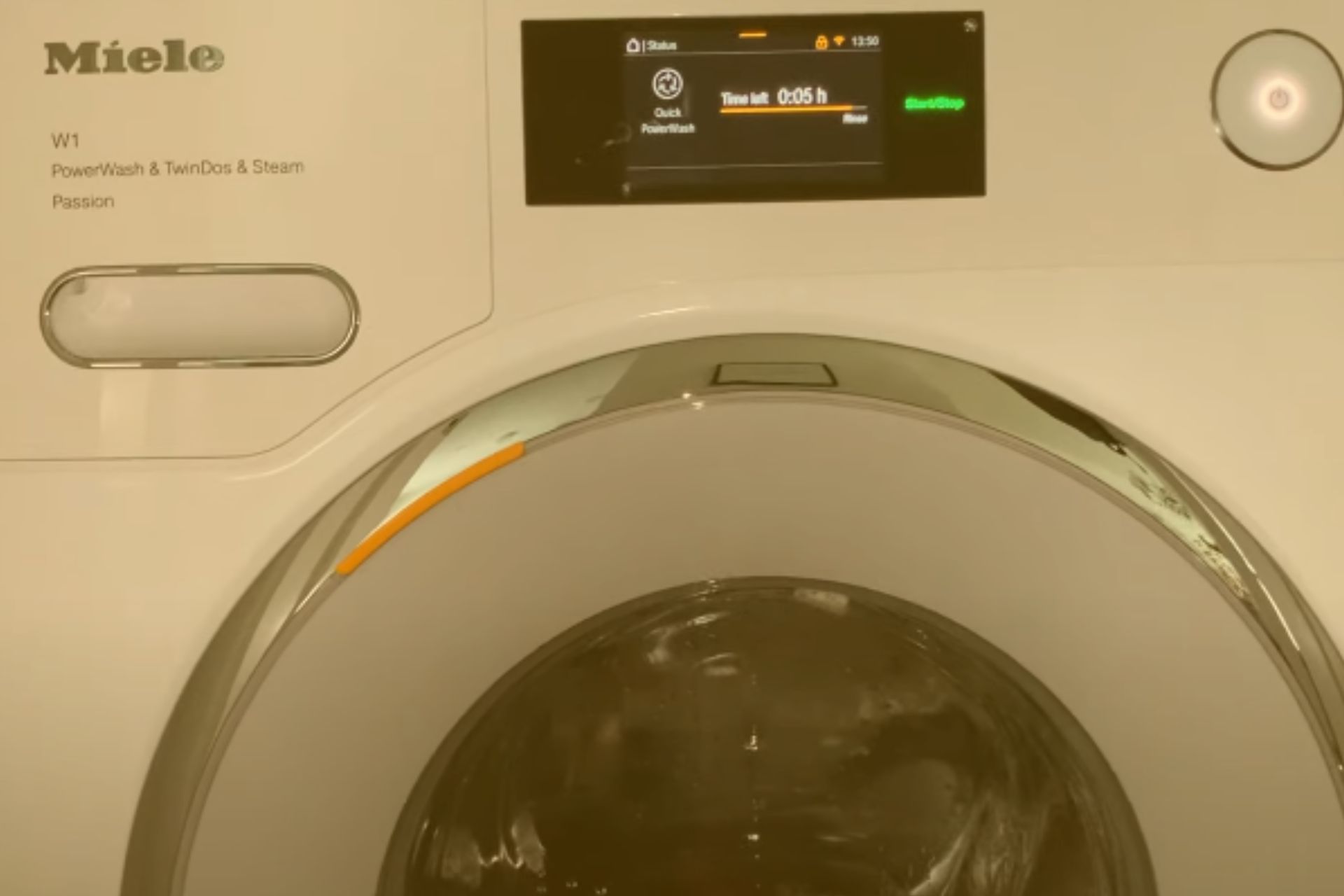Don’t ignore a Miele washing machine that keeps tripping the electrics. This phenomenon is not a mere inconvenience. Your electrics keep tripping because things have gone wrong. They are supposed to protect you from surges, spikes, and short circuits.
If these safety devices fail, those surges, spikes, and short circuits may burn your house to the ground. Don’t be so quick to assume that your fuses, breakers, and RCDs will always protect you. These devices are susceptible to wear, tear, and malfunctions.
Therefore, you should identify the source of the tripping before the worst comes to pass. The following factors might be the cause:
1). Faulty Heating Element
The heating element is a decent starting point. A contributor to this ifixit forum had a Miele washer that tripped the RCD whenever he tried to run a cycle. He also noticed that he could operate the washer without tripping the RCD if he selected cold water.
You can use a similar tactic to determine whether or not your washer’s heating element is at fault. The forum suggested a megger or insulation resistance test. But this assumes you have the skills to open the machine and access the heating element.
Don’t tamper with the Miele washer unless you know what you’re doing. At best, you will void your warranty.
How To Fix It?
You don’t fix heating elements. You simply replace them when they fail. Check the below video to perform the procedure
But as was mentioned before, laypeople shouldn’t perform this task.
In fact, you are discouraged from hiring a technician because their actions may void your warranty. Reach out to the manufacturer and use your warranty to get cheap repairs.
Don’t hire a third-party technician unless your warranty has expired. For all you know, the manufacturer may send you a brand-new washer, but only if you haven’t tampered with your old washing machine.
2). Faulty Breaker/RCD/GFCI/Fuse

These safety devices are not infallible. Sometimes, they trip because they’ve developed faults. Or maybe they’ve reached the end of their lifespans. Consider the following:
- RCDs have an average lifespan of 10 years. They can trip incessantly because they have a fault or you bought a low-quality RCD. Additionally, some appliances overwhelm them, especially devices with motors and pumps that produce momentary electrical spikes.
- Breakers have a longer lifespan. A decent breaker can easily last forty years unless you routinely expose it to dangerous electrical events such as overcurrents and overloads. Breakers with rust, loose connections, melted insulation, and cracked housing should concern you. You may even notice a burning odor coming from the electrical panel.
- People replace GFCIs more frequently than RCDs and breakers. They have an average lifespan of seven to ten years. Faulty GFCIs will trip repeatedly, fail tests, and refuse to reset.
When these protective devices go bad, they will trip for no reason. You need a skilled technician to diagnose the situation to determine whether the fault lies with the washer or the safety devices.
How To Fix It?
Replace the faulty components. RCDs and GFCIs are convenient because they have testing mechanisms. You can push a button to determine whether or not they still work. Circuit breakers are more complicated.
You must connect a multimeter’s prongs to the circuit breaker’s terminal and ground screws. Mr. Electric expects to see 120 – 240V on the display. A lower reading reveals a fault. Common sense will tell you to replace defective RCDs, breakers, fuses, and GFCIs.
A technician may tell you otherwise. They can attempt to perform repairs, and they may even succeed. But replacing the faulty components will give you peace of mind.
3). Wrong Current Rating
RCDs and breakers trip when you exceed their current rating. The objective is to prevent an overload. However, some people select safety devices with the wrong rating. Their RCDs and breakers have a smaller rating than the Miele washer’s electrical requirements.
Therefore, they will trip whenever you run the appliance. These mistakes happen when a layperson buys and installs their own breaker. Although, experts are not immune to such errors.
How To Fix it?
Upgrade your breaker. Get a breaker whose current rating exceeds the Miele washing machine’s electrical requirements. This assumes that the appliance has a dedicated circuit. If the washer sits on a shared circuit, make sure the breaker’s current rating is large enough to accommodate all the devices on the circuit.
You can ask an expert to perform these calculations. They will remember to take the NEC’s 80 percent rule into account.
If you can’t afford to upgrade a shared circuit, the technician will encourage you to reduce the number of appliances running on the circuit simultaneously.
4). Are you using an extension cord or power strips?

While these devices are convenient, they are dangerous. They are more likely to cause short circuits and fires.
How To Fix It?
- Plug the washer into a wall outlet.
- If the washer’s power cord is too short, get an extension cord with a thicker gauge.
5). Faulty Motor
You have a faulty motor. Old or defective motors can trip the circuit breaker or RCD by rotating too quickly, generating excess heat, and pulling too much power. If you have a leak, it may also exacerbate this issue, especially if the water has infiltrated the motor.
How To Fix It?
- Look for leaks. This task requires an expert because you need to disassemble the Miele washer. Fixing or replacing the motor won’t help in the long run if you allow the leaks to continue.
- Replace a defective motor. Don’t forget to test it.
6). Moisture
Moisture has several ways of infiltrating a washing machine and tripping the breakers, fuses, GFCIs, and RCDs:
- You have clogged drain hoses.
- The hoses are damaged.
- The drain pump is clogged or damaged.
- Damp conditions can introduce moisture to the washer’s internal components, especially if you live in a highly humid region. Tripping will occur once this moisture reaches the motors and control modules.
How To Fix It?
- If the Miele washer is practically flooding, turn the water supply off, pull the plug out of the socket and soak up the water with towels wherever you find it.
- Identify and replace damaged hoses and pumps.
- Unclog blocked hoses and pumps.
- Turn the water supply on and look for leaks. You can also turn the agitate cycle on. The family handyman suggests replacing the tub seals. If the leaks continue, call a technician. You probably missed a worn-out gasket somewhere.
7). Loose Connections
Loose connections and broken wires are common causes of tripping in electronic devices. They cause arcing, which is a fire hazard. While many people look for frayed and exposed wiring in the power cord, plug, and outlet, you are better off turning your attention to the door latch.
The door latch can trip the breaker when it fails, especially if it has loose connections. Exposed wires can short to the ground.
How To Fix It?
Replace a faulty door latch assembly. You don’t have to disassemble the washer to access this component because it is located behind the door.

